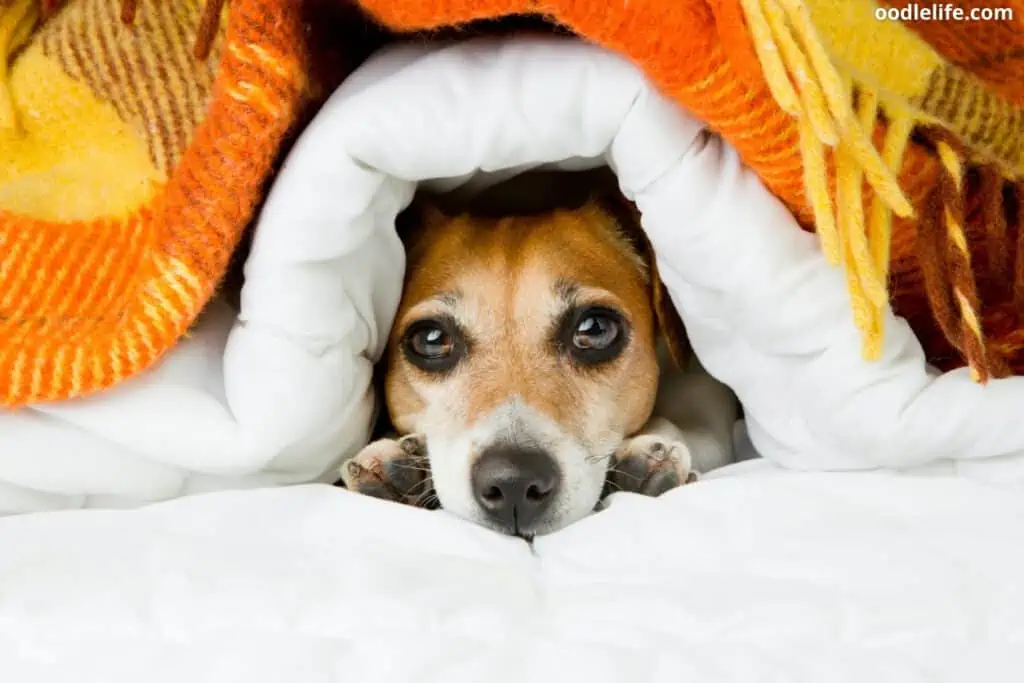6 Steps To Stop Dog Peeing in Crate
As a dog owner, you’re used to picking up your pup’s poo when walking around the neighborhood. However, finding pee in your dog’s crate is another story.
After you recover from the initial relief that your dog peed in their crate instead of your hardwood floor, you’ll understandably grow concerned if this becomes a recurring issue.
I’ll help you understand why your dog might be peeing in their crate and share some strategies for addressing each reason.

Top Reasons Your Dog Pees in Its Crate
From human error to a medical condition, there are many reasons why your dog is peeing in its crate.
1. It’s a Habit
There’s a lot of research and debate around how long it takes humans to develop a habit, with scientists saying it can take between 18 – 254 days. However, if you have a dog that pees in its crate, you’ll likely argue that it took your dog a much shorter time to learn a habit than it does for you.
Dogs love habits. So, assuming that there aren’t medical or other external factors forcing your dog to pee in their crate, they’re likely doing it because they’re used to it.
Often, a dog will develop a habit of peeing in the crate if they had this experience when they were young. Puppies and dogs that have spent time at puppy mills, pet stores, and animal shelters don’t usually have the luxury of being let out of their kennels.
So, to undo this habit, take your dog out of their crate frequently to pee. Every time they use their outdoor bathroom, reward them with a treat.

2. Your Dog Spends Too Much Time in Their Crate
A dog’s bladder isn’t endless. So, if you’re not letting your dog out frequently enough, you’re the reason that they’re going to the bathroom in their crate.
If you have a puppy, you should let them outside to pee according to their age. As a general rule, puppies can hold their pee for one hour per month of age. Therefore, if your puppy is three months old, they’ll be able to hold their pee for around three hours before you risk them having an accident in their crate.
In contrast, adult dogs can hold their pee for 8 hours or longer. However, this can be uncomfortable for your dog. So, you should let your dog out every 4 hours or so if possible.

3. They Have a Medical Condition
Some dogs pee in their crate not because they formed a habit or because you’re not tending to their needs, but because a medical condition is causing it.
Examples of medical conditions that can cause your dog to lose control of its bladder include:
- Urinary tract infection
- Spinal injury
- Prostate disorder
- Hormonal imbalance
- Anatomic abnormalities
So, if you rule out other possible causes of your dog peeing in their crate that we cover here, take them to the vet. With any luck for you and your dog, your veterinarian will be able to treat them for whatever is causing their urination urges.
Furthermore, if you notice that your dog suddenly starts peeing in their crate, it could be a reaction to a new food or medication you’re giving them.

4. The Crate Is Too Large
Let me start with this—it’s always better to offer your dog a crate that’s too large than too small. However, when it comes to addressing the issue of a dog peeing in their bed, it could be because they have enough space to pee and remain far away from it.
Your dog may not seem to be a clean animal as they roll on a dead animal during your morning walk, but they don’t like to sleep where they pee.
Ideally, you should purchase a crate that allows your dog to do the following without a lot of extra wiggle room:
- Stand up
- Turn around easily
- Stretch out when lying down
To avoid the hassle of lugging home different crate sizes to try out on your dog, measure your dog’s length from their nose to their tail and their height from their paw to their head.
Then, add 2 – 4 inches each to their length and height. That’ll make the perfect crate size to prevent your dog from peeing in it.

5. Your Dog Suffers From Separation Anxiety
One of the side effects of separation anxiety in dogs is that they pee. Sometimes, it’s obvious that your dog has an attachment problem, as they may whine when you’re in the shower or be exceptionally clingy.
However, if you have a hunch your dog has separation anxiety but you’re unsure, point a video camera towards their crate. Then, when you leave your house, watch the video for one or more of the following signs:
- Pacing
- Howling
- Digging at their crate
- Chewing at anything in the crate
Should you determine that your dog pees because of separation anxiety in their crate, you’ll likely need to get a canine behavior consultant involved. That way, they can work with you and your dog to help your pooch feel more comfortable when you’re away.

6. You Need to Clean the Crate
We’ve all seen dogs—especially males—mark their territory when walking in the neighborhood. So, if you’re using a secondhand crate, you may need to give it a good clean to stop your dog from peeing in it.
Alternatively, your dog might be peeing in the crate because of its own urine smells. Dogs have as many as 300 million olfactory receptors in their noses compared to a human’s approximately six million receptors.
Therefore, they might smell their own urine and assume that they should pee in the same spot they had in the past.
When the Advice Above Doesn’t Work
If you’ve gone through all the steps above and you still can’t get your dog to stop peeing in their crate, it’s time to get professional help.
Dog trainers can work wonders with helping your dog overcome their peeing issue. Just be sure you’re ready to put in the time to train your dog; your follow-up with what the trainer teaches the two of you is what’ll make the difference with changing your dog’s behavior.

Things to Avoid When Stopping Your Dog From Peeing in Its Crate
When working with a dog peeing in their crate, the last thing you should do is punish them. By doing so, they’ll learn to fear their crate, which could end up making them pee in it even more often.
Furthermore, punishing your dog when you find the pee will leave them confused about why you’re upset.
Instead, use positive reinforcement techniques, including giving out treats for positive behavior when your dog pees outside instead of in their crate.
Are You Ready to Stop Cleaning Up After Your Dog?
A dog peeing in the crate is a serious problem because it can become a health hazard for both your family and pet.
Often, encouraging your dog to stop peeing in their crate is as simple as making physical changes to their environment.
However, there are sometimes medical reasons that dogs can’t control their bladder. So, you should take them to the vet if you have doubts about their health.